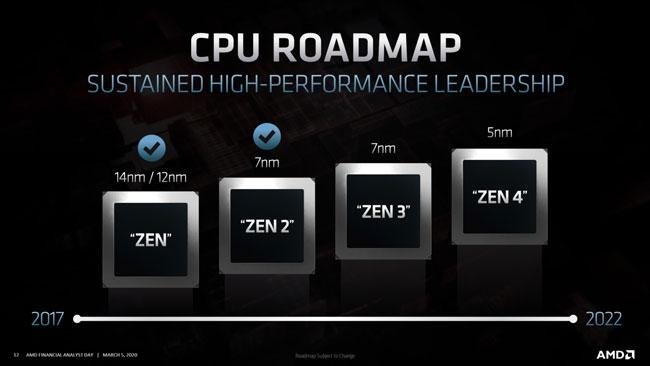Zen 4 and RDNA 3 architectures . It is keen to continually improve its products and aims to push their performance per watt even further.
Energy efficiency and performance at the heart of evolution
AMD has just released the Ryzen 5000 series processors based on the Zen 3 architecture and the Radeon RX 6000 series GPUs based on the RDNA 2 and it is already working on the design of the next generations. The Ryzen 5000 series processors were released last November 5. The Radeon RX 6800 series and Radeon RX 6800 XT series graphics cards will be released on November 18, while sales of the Radeon RX 6900
Zen 4 processors will be manufactured using a 5-nanometer . The burning process for RDNA 3 has still remained secret. In any case, Bergman, Executive Vice President of AMD, claims that the manufacturing process used by the RDNA 3 will be better than that used for the latest generation Radeon RX 6000 series graphics cards. Infinity Cache memory will be increasingly popularized for future generations. It should be noted that RDNA 2 had a 50% jump in performance per watt compared to the RDNA 1 architecture. The new RDNA 3 architecture will do the same according to the AMD spokesperson in The Street.

Why focus development on energy performance?
power supply blocks and cooling systems that are too advanced. Which makes the final overall cost quite high. AMD therefore makes every effort to provide products that do not require too much power to lower the overall cost.
This is even more true for laptops, because the space used is increasingly limited. AMD therefore promises solutions that do not require an extra cooling system.
Performance does not generally go hand in hand with energy efficiency. Indeed, the more the memory bus is widened and the speed increased, the higher the consumption will be. AMD will meet the challenge by still using Infinity cache memory, already present on the latest generation GPUs. Apart from the reduced size coming from the 5 nanometer engraving process, improvements will also be made, among other things, to the IPC, the cache system and the socket which will evolve into AM5. The latter will support DDR5 memories.
The race for performance is thus launched. AMD does not give its competitors any breathing space. The year 2021 already promises to be rich in technological developments.




